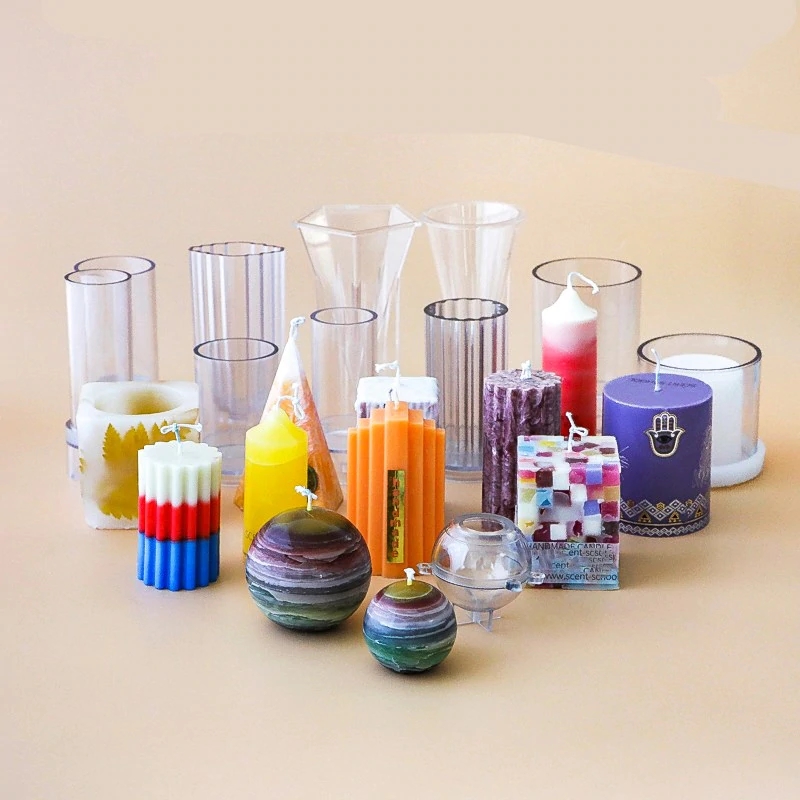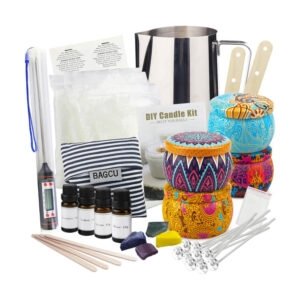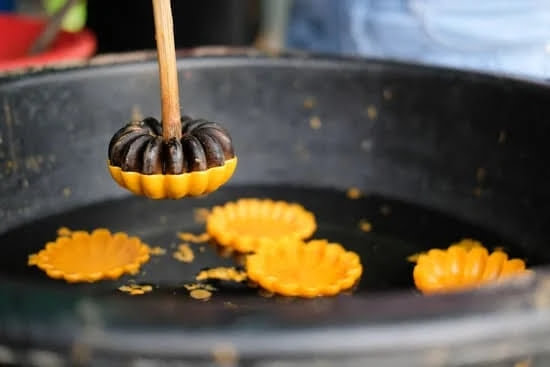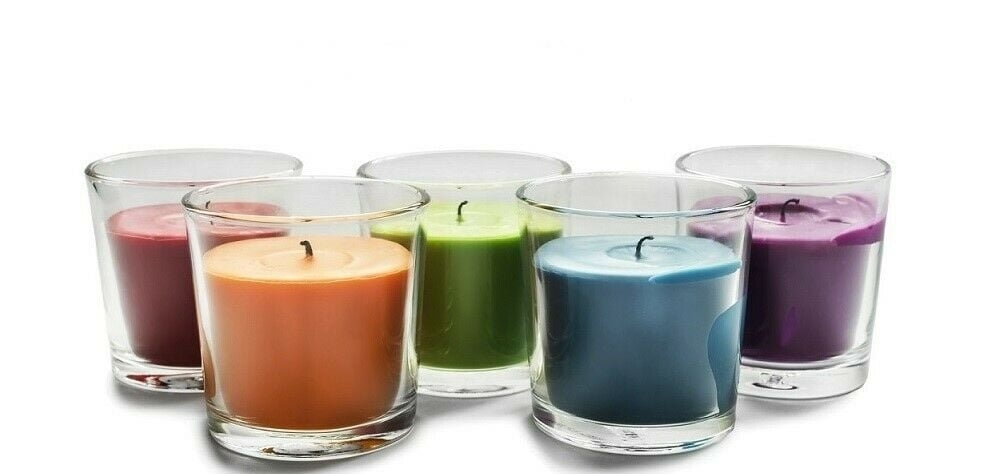Candle making is a popular and rewarding hobby that allows individuals to create beautiful and functional pieces of art. One essential aspect of this craft is the coloring of wax, which adds a creative and personal touch to the finished product. In this article, we will explore how to color wax for candle making, including the different types of coloring agents, safety precautions, techniques, troubleshooting tips, and more.
When it comes to creating candles, the process involves melting and pouring wax into molds or containers. The addition of color not only enhances the visual appeal of the candles but also allows for customization based on personal preferences or specific occasions. Choosing the right coloring agents and applying them correctly can make a significant difference in the final outcome of your candles.
In the following sections, we will delve into various aspects related to wax coloring for candle making. This includes discussing different types of dyes, pigments, and natural colorants that can be used to color wax, as well as important safety precautions when handling these agents and hot wax.
Additionally, we will provide tips on selecting the perfect colors for your candles and share techniques for incorporating colorants into wax effectively. Whether you’re a beginner or an experienced candle maker, this article aims to equip you with valuable knowledge and practical insights to enhance your candle making experience.
Types of Wax Coloring Agents
When it comes to coloring wax for candle making, there are various options available to achieve the perfect hue for your candles. The most common types of wax coloring agents include dyes, pigments, and natural colorants. Dyes are a popular choice as they come in a wide range of colors and can easily be mixed to create custom shades.
They are also highly concentrated, so only a small amount is needed to color a large batch of wax. However, it’s important to note that some dyes may fade over time or change color when exposed to light.
Pigments are another option for coloring wax and are known for their ability to produce vibrant and long-lasting colors. Unlike dyes, pigments do not dissolve in wax but rather disperse throughout the melted wax, creating a more uniform color.
Natural colorants, such as spices, herbs, and botanical extracts, offer a more organic and environmentally friendly approach to coloring wax. While they may not produce as bold or bright colors as synthetic dyes or pigments, natural colorants can add unique hues and subtle tones to your candles.
Each type of coloring agent has its own set of pros and cons, so it’s important to consider factors such as the desired color intensity, longevity, and potential impact on the environment when selecting the right coloring agent for your candle making project. Experimenting with different types of wax coloring agents can help you discover which option best suits your preferences and the specific requirements of your candle designs.
Whether you choose dyes, pigments or natural colorants for your candles, proper handling and measuring techniques are essential for achieving consistent and beautiful results.
Safety precautions should always be observed when working with any type of coloring agent and hot wax. Be sure to wear protective gloves and eyewear during the coloring process and keep all coloring agents out of reach of children and pets.
Additionally, ensure that your work area is well-ventilated to prevent inhalation of any fumes produced by the coloring agents or melted wax. Considering these safety measures will help you enjoy the creative process of how to color wax for candle making while minimizing any potential risks associated with working with these materials.
Safety Precautions for Coloring Wax
When it comes to coloring wax for candle making, safety should always be a top priority. Working with hot wax and coloring agents can pose various risks, so taking the necessary precautions is crucial. One of the most important safety measures is to wear protective gear such as gloves and goggles to prevent any skin or eye contact with the colorants and hot wax.
Another essential precaution is to work in a well-ventilated area to avoid inhaling any fumes that may be emitted during the coloring process. Additionally, it’s important to keep a fire extinguisher nearby, especially when working with open flames or heating elements. Proper handling and storage of coloring agents are also vital to prevent accidental spills and exposure.
It is advisable to read and follow the manufacturer’s instructions for each coloring agent, as different types of dyes, pigments, or natural colorants may require specific handling procedures. By being mindful of these safety precautions, crafters can enjoy their candle-making process without compromising their well-being.
| Safety Tips for Handling Coloring Agents | Storage Recommendations |
|---|---|
| Wear gloves and goggles when working with coloring agents | Keep colorants in sealed containers away from direct sunlight |
| Work in a well-ventilated area to avoid inhaling fumes | Store colorants in a cool, dry place inaccessible to children or pets |
| Keep a fire extinguisher nearby when working with open flames or heating elements | Avoid storing colorants near heat sources or flammable materials |
| Read the manufacturer’s instructions for specific handling guidelines | Label containers properly with the name of the colorant and expiration date if applicable |
By following these safety precautions and guidelines on how to handle and store coloring agents properly, crafters can ensure a safe and enjoyable experience while adding vibrant hues to their homemade candles.
Choosing the Right Color for Your Candles
When it comes to candle making, choosing the right color for your candles is an essential part of the creative process. The color of a candle can set the mood, complement a theme, or simply reflect personal preferences. Whether you are making candles for personal use or to sell, selecting the perfect color can make a significant impact on the overall appeal of your candles.
When deciding on the color for your candles, consider the occasion or purpose for which they will be used. For example, soft pastel colors such as pale pink or light blue may be suitable for baby showers or wedding favors, while warm autumn hues like deep red and burnt orange could be perfect for fall-themed candles. Understanding the symbolism and associations of different colors can help you choose the most suitable option for your specific needs.
Furthermore, experimenting with mixing and matching colors can allow you to create unique shades that perfectly align with your vision. For example, combining a small amount of blue dye with a larger amount of white wax can result in a delicate baby blue shade. Similarly, blending red and yellow dyes can produce a vibrant orange color. By understanding how different colors interact and influence each other when mixed together, you can achieve an array of beautiful shades for your candles.
In addition to considering the occasion and theme, it’s important to take personal preferences into account when choosing candle colors. If you are creating candles for yourself or as gifts for loved ones, think about their favorite colors and what would resonate with them.
Using colors that hold sentimental value or evoke positive emotions can make the candle-giving experience even more special. Ultimately, the right color choice should bring joy and satisfaction to both the candle maker and those who will enjoy the final product.
Techniques for Coloring Wax
When it comes to crafting beautiful and unique candles, the coloring of wax plays a crucial role in achieving the desired look and feel. There are various techniques for coloring wax, each offering different results and levels of complexity. Here are some popular techniques for incorporating colorants into wax:
- Melting Method: This method involves melting the wax and adding the colorant directly to the melted wax. This allows for a thorough mix of color throughout the entire candle.
- Dipping Method: In this technique, pre-made candles are dipped into colored wax to create layers of different hues. This method is great for creating gradient effects or multicolored candles.
- Adding Directly to Melted Wax: Some colorants can be added directly to the melted wax without needing to be dissolved first. This method is quick and easy, making it ideal for beginners.
No matter which technique you choose, it’s important to follow proper safety guidelines when working with hot wax and coloring agents. Always wear protective gear such as gloves and goggles, and work in a well-ventilated area to avoid inhaling fumes from the colorants.
For those who prefer a more intricate approach, there are also advanced techniques such as marbling, layering, and creating patterns within the wax using different colors. These techniques require practice and patience but can result in stunning, one-of-a-kind candles.
In order to achieve the perfect shade or hue for your candles, don’t be afraid to mix and match colors. Experimenting with different combinations can lead to unexpected but beautiful results. Additionally, consider using natural colorants such as dried flowers or herbs for a more organic look and feel.
Overall, mastering the techniques for coloring wax allows candle makers to unleash their creativity and produce candles that are not only visually appealing but also reflect their unique style and personality. With practice and experimentation, anyone can become proficient in this art form and create stunning handcrafted candles.
Troubleshooting Common Issues
When coloring wax for candle making, it’s common to encounter some issues that may affect the overall look and quality of your candles. One of the most common problems is uneven coloring, where the wax may appear blotchy or have streaks of different shades.
This can be caused by not mixing the colorants thoroughly into the wax or by fluctuations in temperature during the cooling process. To prevent this issue, make sure to stir the colorant well into the melted wax and try to maintain a consistent temperature while the wax is setting.
Another issue that candle makers may face is color bleeding, especially when using multiple colors in a single candle. This occurs when one color starts to bleed into another, creating a messy and unintended effect. To avoid color bleeding, it’s important to use high-quality dyes and pigments that are specifically designed for candle making. Additionally, allowing each layer of colored wax to fully set before adding another layer can help prevent bleeding.
Lastly, air bubbles can sometimes form within the colored wax, causing blemishes on the surface of your candles. These unsightly bubbles can detract from the overall appearance of your creations. To minimize air bubbles in colored wax, try heating your container of colored wax gently before pouring it into molds or containers. This can help release any trapped air and create a smoother finish on your candles.
Overall, troubleshooting common issues when coloring wax for candle making requires attention to detail and patience. By addressing these problems proactively and implementing proper techniques, you can achieve beautifully colored candles that are free from imperfections.
| Common Issue | Solution |
|---|---|
| Uneven Coloring | Thoroughly mix colorants into wax and maintain consistent temperature while setting |
| Color Bleeding | Use high-quality dyes and allow each layer of wax to fully set before adding another layer |
| Air Bubbles | Gently heat colored wax before pouring to release trapped air and create smoother finish |
By following these tips and tricks for troubleshooting common issues when coloring wax for candle making, you can ensure that your final products are visually appealing and free from imperfections.
Adding Fragrance to Colored Wax
Enhancing the Candle-Making Experience
Adding fragrance to colored wax not only enhances the visual appeal of the candles but also creates a multi-sensory experience for those who light them. The scent of a candle can evoke memories, create ambiance, and even affect one’s mood. Therefore, choosing the right fragrance to complement the color of the wax is crucial in candle-making.
Choosing Complementary Fragrances
When selecting a fragrance to add to colored wax, consider the theme or occasion for which the candles are being made. For floral-scented candles with pastel-colored wax, opt for fragrances like lavender or rose. Earthy scents like sandalwood or patchouli pair well with darker, more intense colors. Experimenting with different combinations can help achieve a harmonious balance between color and fragrance.
Methods for Adding Scent
There are various methods for infusing colored wax with fragrance. One common technique is to use scented oils specifically formulated for candle making. These oils can be added directly into the melted wax at the appropriate temperature, ensuring that the scent is evenly distributed throughout the candle. Another method involves using pre-scented dyes that combine both colorants and fragrances in one product.
By carefully considering fragrance when coloring wax for candle making, crafters can create beautiful and aromatic candles that offer an unforgettable sensory experience. Whether crafting candles for personal use or as gifts, adding scent to colored wax is an important step in creating unique and appealing products that delight both visually and aromatically.
Final Touches and Presentation
Adding Decorative Elements
Once you have successfully colored your wax and poured it into your molds, the next step is to add decorative elements to make your candles stand out. Consider adding a touch of sparkle with glitter, incorporating dried flowers or herbs for a natural aesthetic, or even experimenting with embellishments like ribbons or beads. These decorative elements can enhance the visual appeal of your colored candles and make them more enticing to potential buyers or gift recipients.
Proper Presentation and Packaging
After completing the candle making process, it’s important to think about how you will present and package your colored candles. Consider using elegant jars, stylish tins, or unique containers that complement the color scheme of your candles. Additionally, labeling your candles with attractive tags or stickers can add a professional touch to your products. Proper presentation and packaging can significantly impact the perceived value of your colored candles and contribute to their overall appeal.
Selling Your Creations
If you plan on selling your colored candles, consider creating a cohesive brand image that reflects your personal style and the quality of your products. This includes developing distinctive packaging, establishing an online presence through social media and e-commerce platforms, and networking within local artisanal markets or craft fairs.
By showcasing your creativity in wax coloring and attention to detail in presentation, you can attract customers who appreciate artisanal candles and are willing to invest in high-quality handmade products.
By paying attention to the final touches and presentation of your colored candles, you can elevate the overall aesthetic appeal of your creations and create a strong impression on potential buyers or gift recipients. Taking these additional steps in the candle making process shows that you not only have an eye for color but also have thoughtfully considered every aspect of the product’s design from start to finish.
Conclusion
In conclusion, learning how to color wax for candle making is an essential skill for anyone interested in creating beautiful and unique candles. Whether you are a beginner or an experienced candle maker, understanding the different types of wax coloring agents, safety precautions, and techniques for achieving the perfect color is key to producing high-quality candles.
By following the tips and guidelines outlined in this article, you can confidently experiment with various colors, mix and match shades, and troubleshoot common issues that may arise during the coloring process.
It’s important to remember that safety should always be a top priority when working with coloring agents and hot wax. By following proper safety precautions and handling techniques, you can prevent accidents and ensure a safe and enjoyable candle making experience. Additionally, selecting the right color for your candles based on the occasion, theme, or personal preferences, along with adding complementary fragrances, allows you to create truly unique and personalized candles.
As you venture into the world of coloring wax for candle making, don’t be afraid to get creative and try new techniques. Experimenting with different coloring methods and adding decorative elements like glitter or dried flowers can elevate your candles to a whole new level. With practice and patience, you will develop your own signature style and technique for coloring wax for candle making. So go ahead, unleash your creativity, and enjoy the art of crafting beautifully colored candles.
Frequently Asked Questions
What Can I Use to Color Candle Wax?
There are various options to color candle wax, including liquid dyes, dye chips, and even natural colorants like spices or herbs. Each option has its own method of use and recommended application to achieve the desired color.
How Do You Add Liquid Dye to Candle Wax?
When adding liquid dye to candle wax, it is important to start with a small amount and gradually increase until the desired color is achieved. It is best to follow the manufacturer’s guidelines for the specific type of liquid dye being used and ensure thorough mixing for an even color distribution.
Can I Use Ink to Color Candle Wax?
While ink may seem like a convenient option for coloring candle wax, it is not recommended as it can affect the quality of the candle and potentially pose safety risks when burned. It is best to stick to dyes and colorants specifically designed for candle making to ensure safety and quality in the final product.

Welcome to my candle making blog! In this blog, I will be sharing my tips and tricks for making candles. I will also be sharing some of my favorite recipes.





